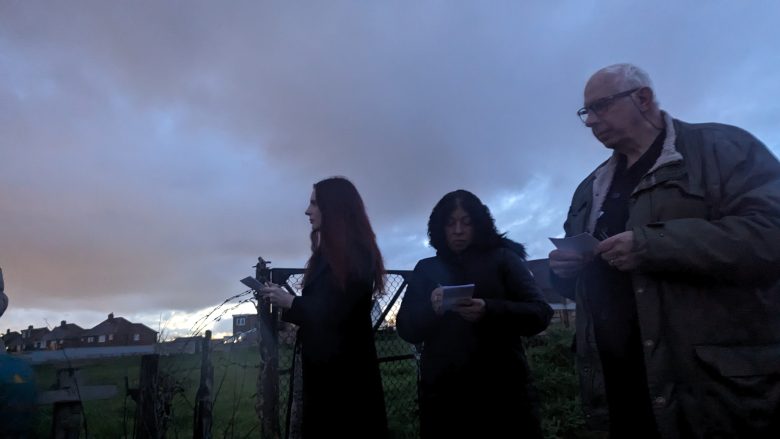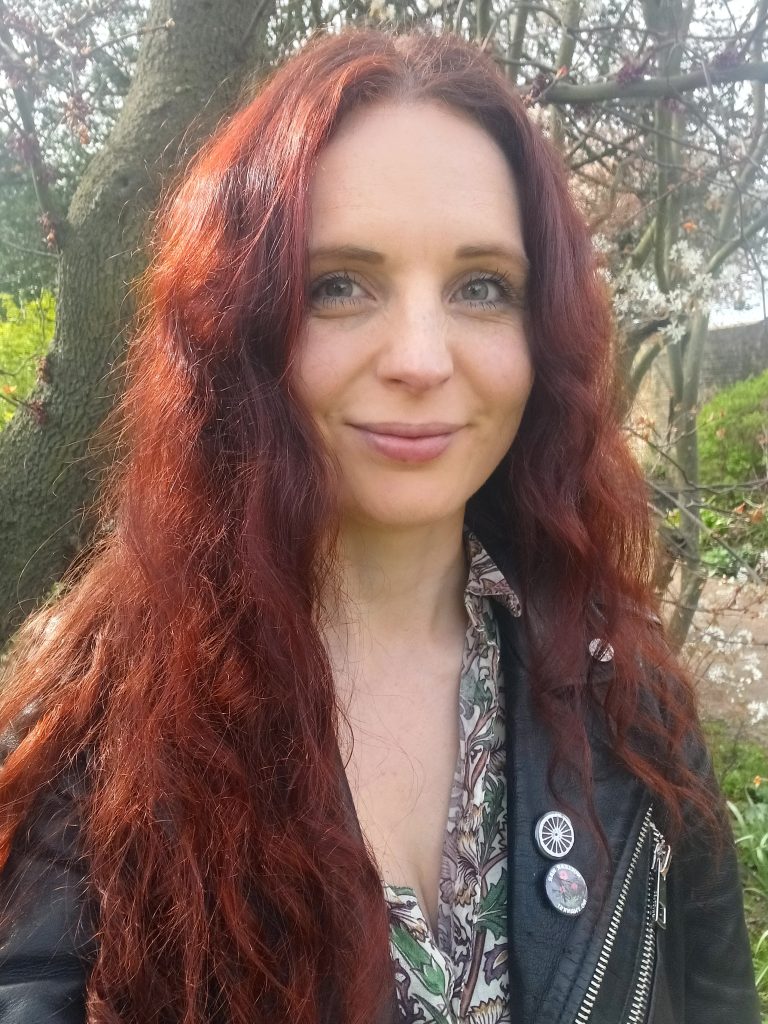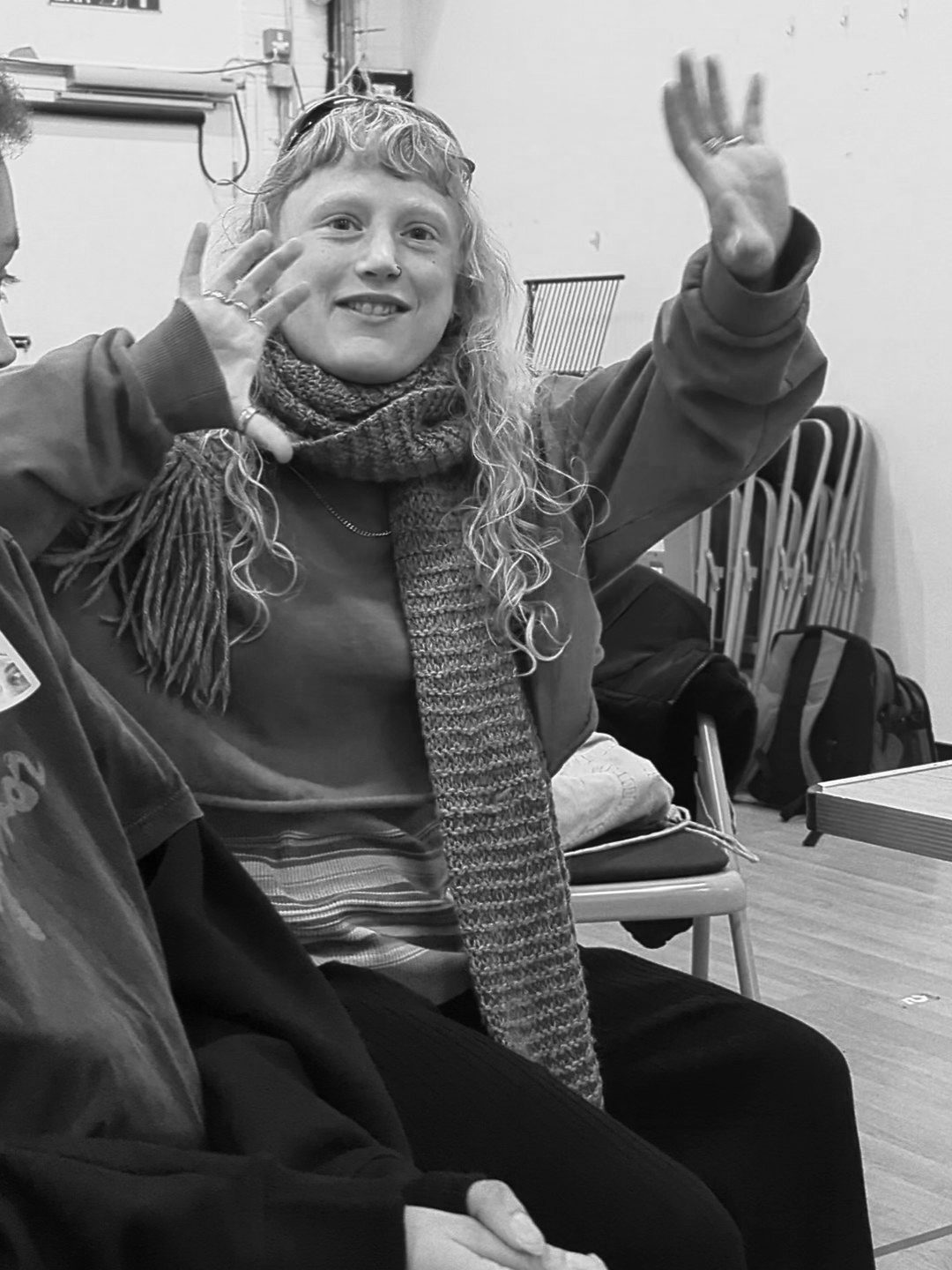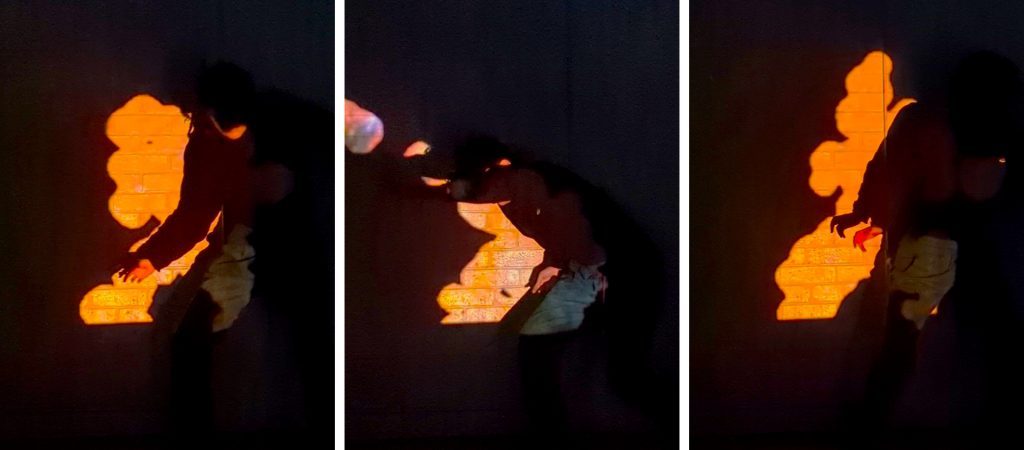Above photo: Ruth, far left, looking out at the view from Wennington Church.
We invited Havering local, environmental activist and writer Ruth Kettle-Frisby to write a guest blog article on DYSBIOSIS after attending some of our DYSBIOSIS Creative Nature Workshops in Havering this month.
What is nature to me?
When I first saw the term Dysbiosis – the title of the creative workshops here in Havering by Daedalus Theatre Company – my mind began to juxtapose discordant thoughts that seemed nevertheless to harmonise. Funnily enough, it is this very paradox that encapsulates nature.
Nature functions to such a finely tuned degree that the earth spins on its axis around the precise gravitational force to sustain life; and this mechanical harmony extends to our localised experiences here on earth, which can be beautiful to behold.
There are few things I enjoy more than an enchanted stroll around Warley Place when it’s sprinkled with clumps of dewy snowdrops glistening in the morning sun, sporadically dissected by ancient trees, some even thriving in supine slumber after great storms…or treating fluffy ducklings, flapping feral pigeons, and tame grey squirrels to veritable feasts at Langtons Gardens on a crisp Spring afternoon: scenes of comical unrest annually reverberate from the resident cob, angrily chasing persistent Canada geese from the lake; loss and sadness rippling in the still air as it becomes apparent on returning children’s fingers, that numbers no longer add up, and he’s attacked some of his own cygnets.
Nature continues to inspire artists, photographers and musicians; it provides us with sustenance, shelter, oxygen and medicine; it grinds our remains deep into its geology, and it contains coded messages of hope, regeneration and resilience, much like the Gingko trees that survived after the atomic bombings of Hiroshima and Nagasaki. Nature also has the ability to overwhelm with its might, brutality and caprice; blithely indifferent to some of our deepest instincts and desires.



